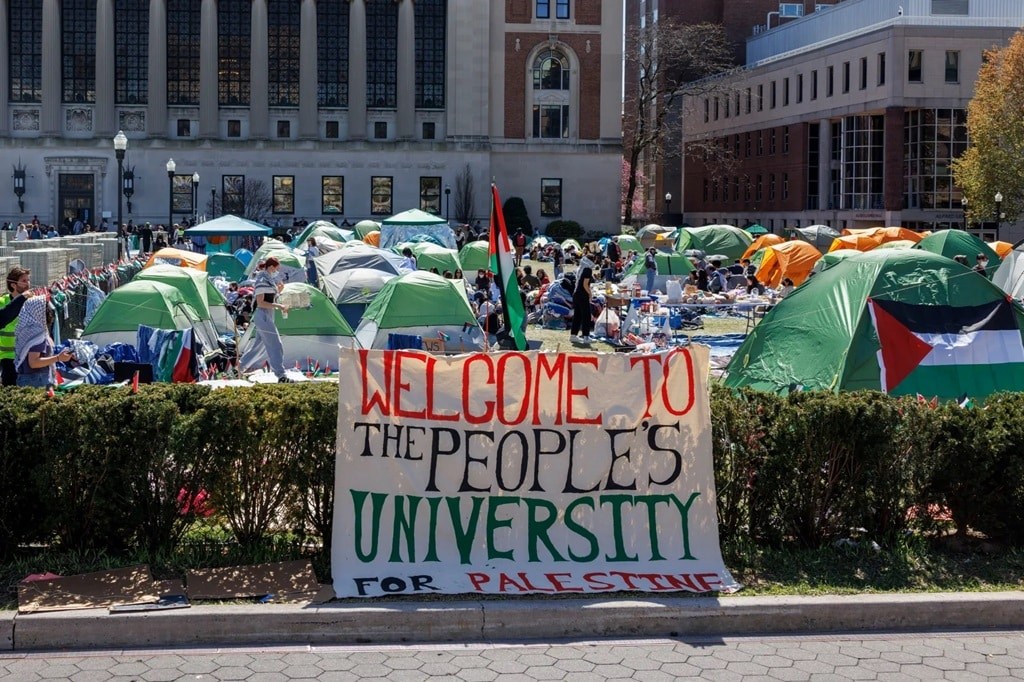in September when classes renew

Nara Milanich, professor at Columbia University: “Antisemitism is a Trojan horse; there is an intention to intervene in universities.”
By Carlos F. Chamorro (Confidencial)
HAVANA TIMES – On April 17, 2024, a few hours after the president of Columbia University, Minouche Shafik, testified in a hearing of the United States Congress about alleged “antisemitic” activities on the university campus, the first student “encampment” against the war in Israel in Gaza erupted, which has caused more than 30,000 deaths, mostly civilians, including thousands of women and children, following the Hamas terrorist attack against Israel that resulted in 1,400 deaths and the capture of 230 civilians as hostages.
The day after, the students were evicted by the New York Police at the request of Columbia authorities, and the pro-Palestinian student protest spread to more than 40 universities, including Texas, Michigan, UCLA in California, Yale, Brown, Northwestern, Emory, Vermont, in 25 states across the United States, where more than 2,000 students have been arrested by the police.
Nara Milanich, a history professor at Columbia University, supports the right to student protest and attributes the claim of some congress members about the alleged “antisemitic threat” in universities to a political pretext. “It’s a Trojan horse from right-wing sectors, who are more interested in being able to intervene in universities and trying to control what is taught, what is said, and what is researched,” she states in an interview on the program Esta Semana.
The academic, a member of the Jewish community, believes that the student protest against President Joe Biden’s support for Israel’s policy could impact the November elections between the Democratic president and Donald Trump, and warns that “if the war continues in Gaza, if nothing changes, the student protest will continue after September,” when the academic year resumes at universities.
What was the main cause of the student protest erupting at Columbia University more than two weeks ago? Who called for it, and how do you explain the fact that this protest has now been reproduced at more than 40 universities in the United States?
This famous camp that started the whole story of the last two weeks began the same day that the president of Columbia appeared before a hearing of congress members in Washington to talk about the alleged crisis of antisemitism at the university.
In reality, that hearing was a public relations disaster in which she gave in on all the university’s values. That same morning of the hearing, a camp appeared, a series of tents in the middle of the university. These green tents seemed like mushrooms. This camp was organized by a group of students, unknown in number. It lasted just about 30 hours. And the next day, at one in the afternoon, the police appeared and arrested about 100 students.
Shortly after, another group of students took another space, right next to the first camp. A second camp was reestablished, and it lasted until Tuesday (April 30), when we saw this incredible display of police power. Hundreds of NYPD police officers arrived to dismantle the camp and to evict dozens of students who had taken over a university building.
Why is the United States Congress intervening in university environments? Some of them, like Columbia, are private universities, and they question the presidents and accuse them of allowing antisemitic expressions in their universities that threaten freedom of speech. Some have resigned, such as the presidents of Harvard and Pennsylvania universities. How does congressional intervention impact universities?
There has been a whole narrative since last fall, since the October 7 attack (by Hamas in Israel), about antisemitism on campus. And I want to describe a little what I saw as a Jewish pro


